Cuban beef empanadas represent one of the most beloved comfort foods in Latin American cuisine. These golden half-moon pastries filled with seasoned ground beef capture the essence of Cuban flavors in every bite. We’ve perfected this traditional recipe to bring authentic taste straight to your kitchen.
The secret lies in the perfect balance of spices – cumin, oregano, and sazón create that distinctive Cuban flavor profile that makes these empanadas irresistible. Our recipe combines tender beef with sofrito, olives, and raisins for a filling that’s both savory and slightly sweet.
Whether you’re hosting a party or craving a satisfying snack, these empanadas deliver every time. We’ll guide you through creating both the flaky pastry and the flavorful filling that makes these Cuban treats absolutely addictive. Get ready to impress your family and friends with this authentic taste of Cuba.
Ingredients
Creating authentic Cuban beef empanadas requires fresh quality ingredients that build layers of traditional flavor. We’ll organize our ingredients into three sections to streamline the cooking process.
For the Empanada Dough
- 3 cups all-purpose flour
- 1 teaspoon salt
- 1/2 cup cold butter, cubed
- 1 large egg
- 1/2 cup cold water
- 2 tablespoons white vinegar
- 1 tablespoon sugar
For the Cuban Beef Filling
- 1 pound ground beef (80/20 blend)
- 1 medium yellow onion, finely diced
- 1 green bell pepper, finely diced
- 4 garlic cloves, minced
- 1/4 cup sofrito
- 1 packet sazón with culantro and achiote
- 1 teaspoon ground cumin
- 1 teaspoon dried oregano
- 1/2 teaspoon smoked paprika
- 1/4 teaspoon black pepper
- 1 teaspoon salt
- 1/4 cup green olives, chopped
- 1/4 cup golden raisins
- 2 tablespoons tomato paste
- 1/4 cup beef broth
- 2 tablespoons olive oil
For Assembly and Finishing
- 1 large egg, beaten (for egg wash)
- 2 tablespoons whole milk
- Vegetable oil for frying (if frying)
- Coarse sea salt for sprinkling
Equipment Needed
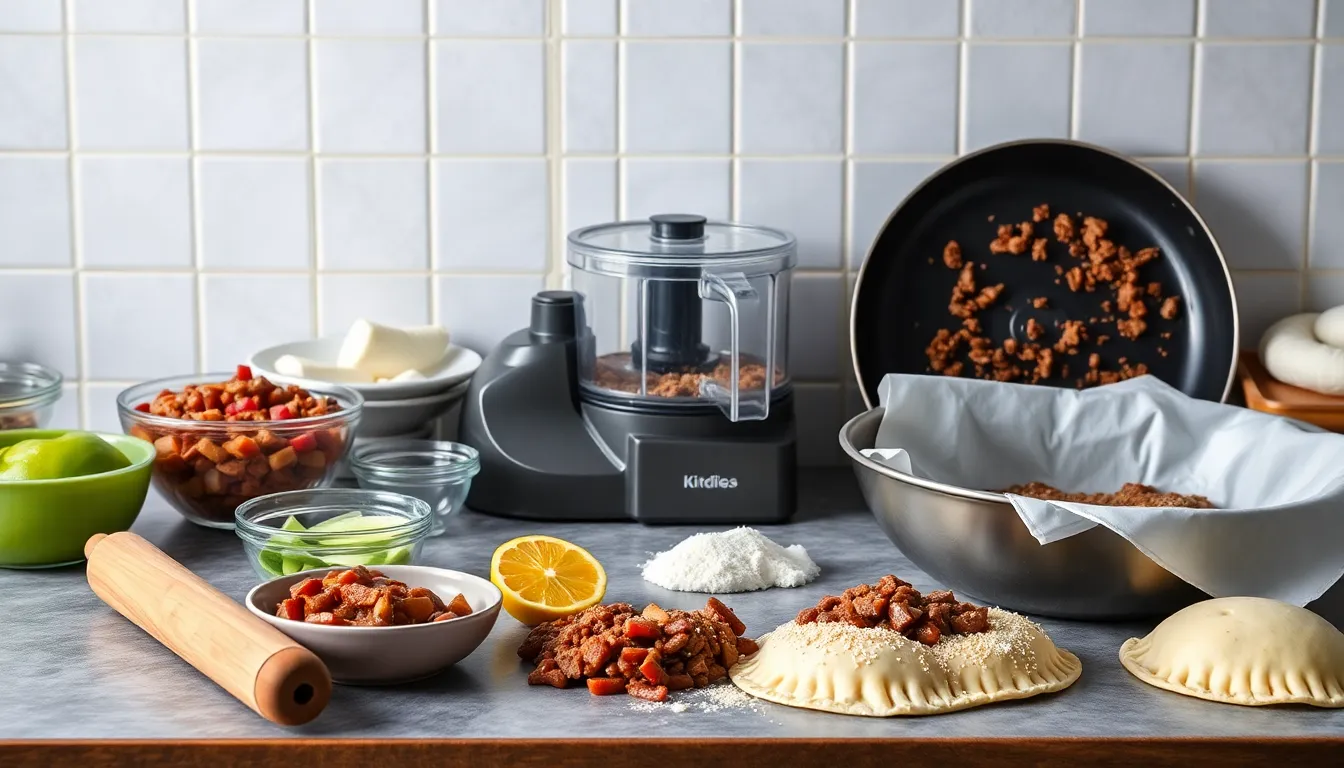
Creating perfect Cuban beef empanadas requires the right tools to achieve both the flaky pastry and flavorful filling that make this dish extraordinary. We’ve organized the essential equipment you’ll need to streamline your cooking process and ensure professional results.
For Dough Preparation:
- Large mixing bowls for combining flour and ingredients
- Food processor or pastry cutter to blend cold butter into flour
- Rolling pin for creating uniform dough circles
- Clean kitchen towels to keep dough covered while resting
For Filling Preparation:
- Large skillet or frying pan for cooking the picadillo
- Sharp knife and cutting board for dicing vegetables
- Wooden spoon for stirring and breaking up ground beef
- Measuring cups and spoons for precise ingredient portions
For Assembly and Cooking:
- Round cutter or empanada molds to shape perfect circles
- Small spoon or ladle for portioning filling
- Fork for sealing empanada edges
- Pastry brush for applying egg wash
For Frying Method:
- Deep heavy pot or deep fryer for oil
- Candy thermometer to monitor oil temperature
- Slotted spoon for removing empanadas
- Paper towels for draining excess oil
For Baking Method:
- Large baking sheets lined with parchment paper
- Wire cooling racks for proper air circulation
Having these tools ready before you start cooking will make the empanada making process smooth and enjoyable. The right equipment ensures consistent results whether you choose to fry or bake your empanadas.
Instructions
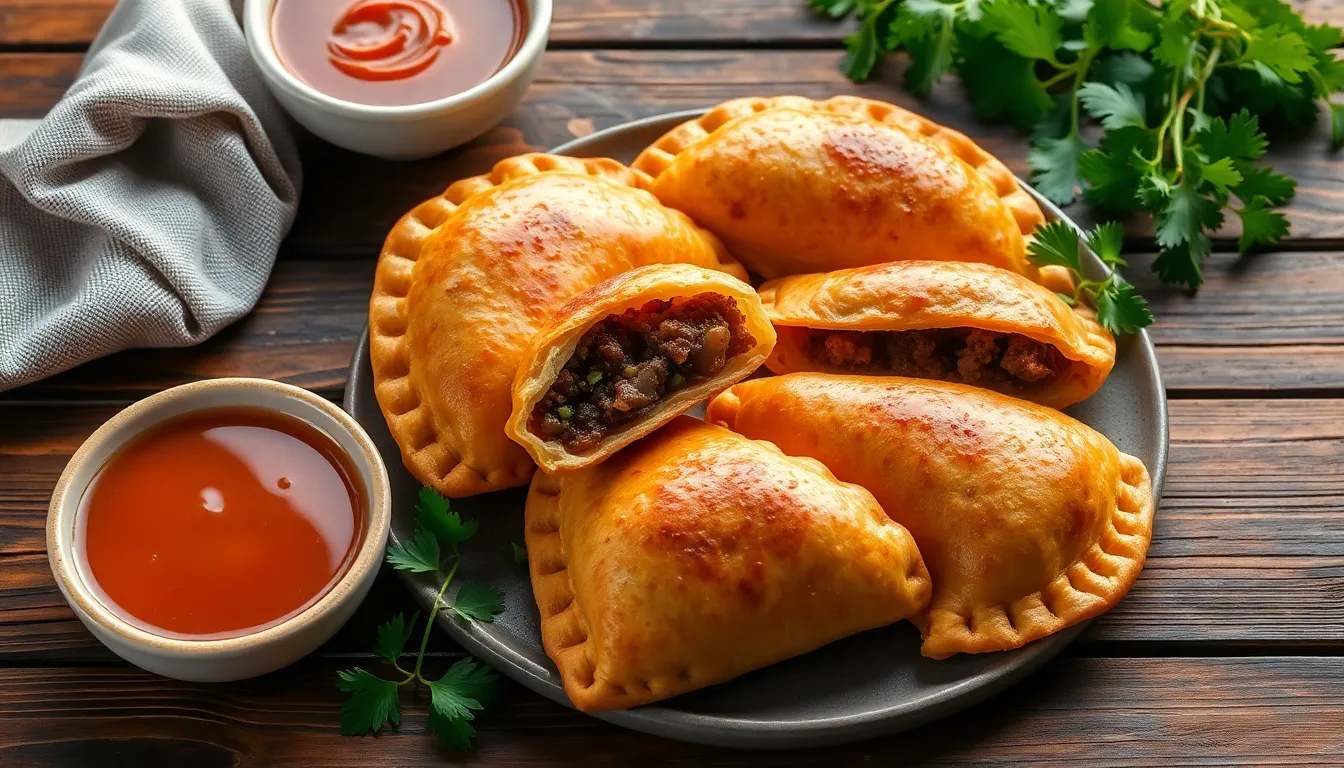
Now that we have our ingredients and equipment ready, let’s walk through each step to create these authentic Cuban beef empanadas with their signature golden exterior and savory picadillo filling.
Prepare the Empanada Dough
We can simplify this process by using store-bought frozen empanada dough discs, which are readily available and deliver excellent results. Simply thaw the discos para empanadas according to package directions and they’re ready to use.
For homemade dough, we combine the all-purpose flour and salt in a large mixing bowl. We cut the cold butter into small cubes and work it into the flour mixture using a pastry cutter or food processor until the mixture resembles coarse crumbs. We whisk together the egg, cold water, white vinegar, and sugar in a separate bowl. We gradually add this liquid mixture to the flour, mixing until a soft dough forms.
We wrap the dough in plastic wrap and refrigerate for at least 30 minutes. After chilling, we roll out the dough on a floured surface to about 1/8 inch thickness. We cut the dough into round discs measuring 5 to 6 inches in diameter using a round cutter or large bowl as a guide.
Make the Cuban Beef Filling
We heat olive oil in a large skillet over medium high heat. We add the diced yellow onion and green bell pepper, cooking until softened and translucent, about 5 minutes. We stir in the minced garlic and cook for another minute until fragrant.
We add the ground beef to the skillet, breaking it up with a wooden spoon as it cooks. We season the beef with kosher salt, black pepper, smoked paprika, oregano, and ground cumin. We cook until the beef is browned and fully cooked through, about 8 minutes.
We add the diced Yukon Gold potatoes to the mixture and cook until they begin to soften, about 5 minutes. We stir in the tomato paste, sofrito, and sazón, cooking for 2 minutes to develop the flavors. We add the raisins, sliced green olives, and capers to create that authentic sweet and savory Cuban taste.
We pour in a splash of beef broth to keep the filling moist and help meld all the flavors together. We simmer the mixture for 10 minutes, stirring occasionally, until the potatoes are tender and the liquid has mostly evaporated. We remove from heat and let the filling cool completely before assembling the empanadas.
Assemble the Empanadas
We place each dough disc on a clean work surface and add 1 to 2 tablespoons of the cooled beef filling to one half of each disc. We avoid overfilling to prevent the empanadas from bursting during cooking.
We lightly moisten the edges of the dough with water using our finger or a pastry brush. We fold the dough over the filling to create a half moon shape, ensuring the edges align properly.
We press the edges firmly together with our fingers, then seal them completely using the tines of a fork. This creates a tight seal that prevents the filling from leaking during cooking. We brush the tops with egg wash mixed with whole milk for a beautiful golden finish.
Cook the Empanadas
For the most authentic results, we heat vegetable oil in a heavy bottomed pot or deep fryer to 350°F. We carefully add the empanadas in small batches, avoiding overcrowding the pot.
We fry the empanadas for 3 to 5 minutes, turning them once, until they’re golden brown and crispy on all sides. We use a slotted spoon to remove them from the oil and drain on paper towels to remove excess oil.
For a healthier baked option, we preheat our oven to 400°F and place the empanadas on a parchment lined baking sheet. We bake for 20 to 25 minutes until golden brown and crispy, though frying yields the crispiest crust.
We sprinkle the hot empanadas with coarse sea salt while they’re still warm and serve immediately for the best texture and flavor.
Baking vs Frying Options
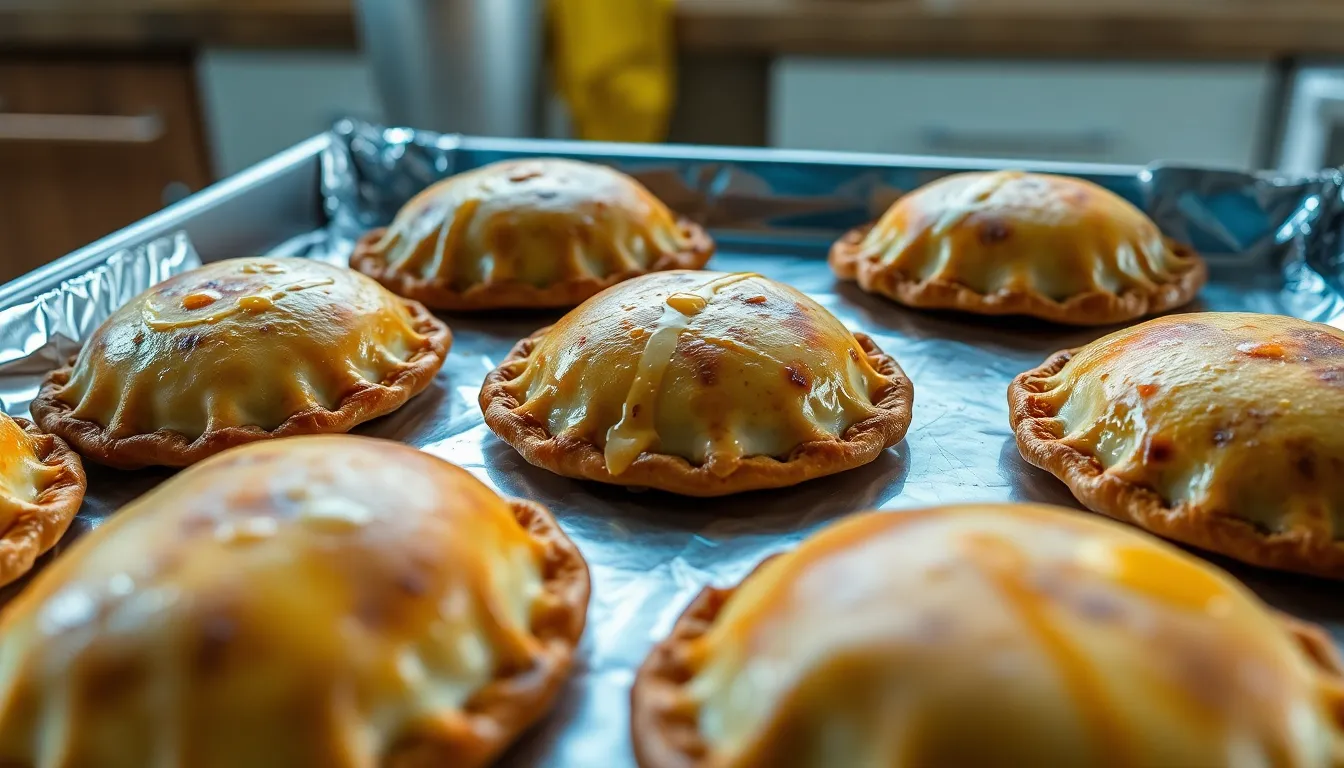
After assembling our Cuban beef empanadas we face an important decision about the final cooking method. Both baking and frying deliver exceptional results with distinct advantages for different occasions and preferences.
Baked Cuban Beef Empanadas
We recommend preheating the oven to 375°F (190°C) for optimal results. Place our assembled empanadas on a foil-lined baking sheet that has been lightly sprayed with cooking oil. Brush each empanada with egg wash to achieve that beautiful golden finish we all love.
Baking requires 20 to 30 minutes until the empanadas turn crisp and golden brown. This method produces less oily empanadas with a satisfying crispy crust while maintaining the integrity of our flavorful picadillo filling. We find baking particularly advantageous for larger batches since we can cook multiple empanadas simultaneously without the hands-on attention that frying demands.
The healthier alternative of baking creates less mess in our kitchen and allows us to prepare party portions efficiently. Our baked empanadas develop a lighter texture while still delivering the authentic Cuban flavors we seek.
Fried Cuban Beef Empanadas
Heat enough vegetable or canola oil in a deep pan over medium-high heat for traditional Cuban preparation. We carefully fry empanadas in small batches to maintain proper oil temperature and ensure even cooking. Each empanada needs approximately 3 to 5 minutes per side until achieving that perfect golden brown color.
Drain excess oil on paper towels immediately after removing from the hot oil. Frying yields a richer and crispier exterior with the traditional texture that many Cuban families prefer. The frying process creates a distinctive golden crunch while keeping the interior moist and flavorful.
This method produces empanadas with higher fat content and a more indulgent flavor profile. We find that fried empanadas deliver the authentic street food experience that makes Cuban beef empanadas so beloved.
| Aspect | Baking | Frying |
|---|---|---|
| Healthiness | Lower fat, less greasy | Higher fat content, richer flavor |
| Texture | Crisp but lighter | Crunchy and golden, traditional |
| Preparation Ease | Less hands-on, less oil, less mess | Requires oil management, active frying |
| Cooking Time | About 20-30 min | About 3-5 min per batch |
Both methods produce delicious Cuban beef empanadas with our robust savory picadillo filling. The choice depends on our health preferences and desired texture for the occasion.
Make-Ahead Instructions
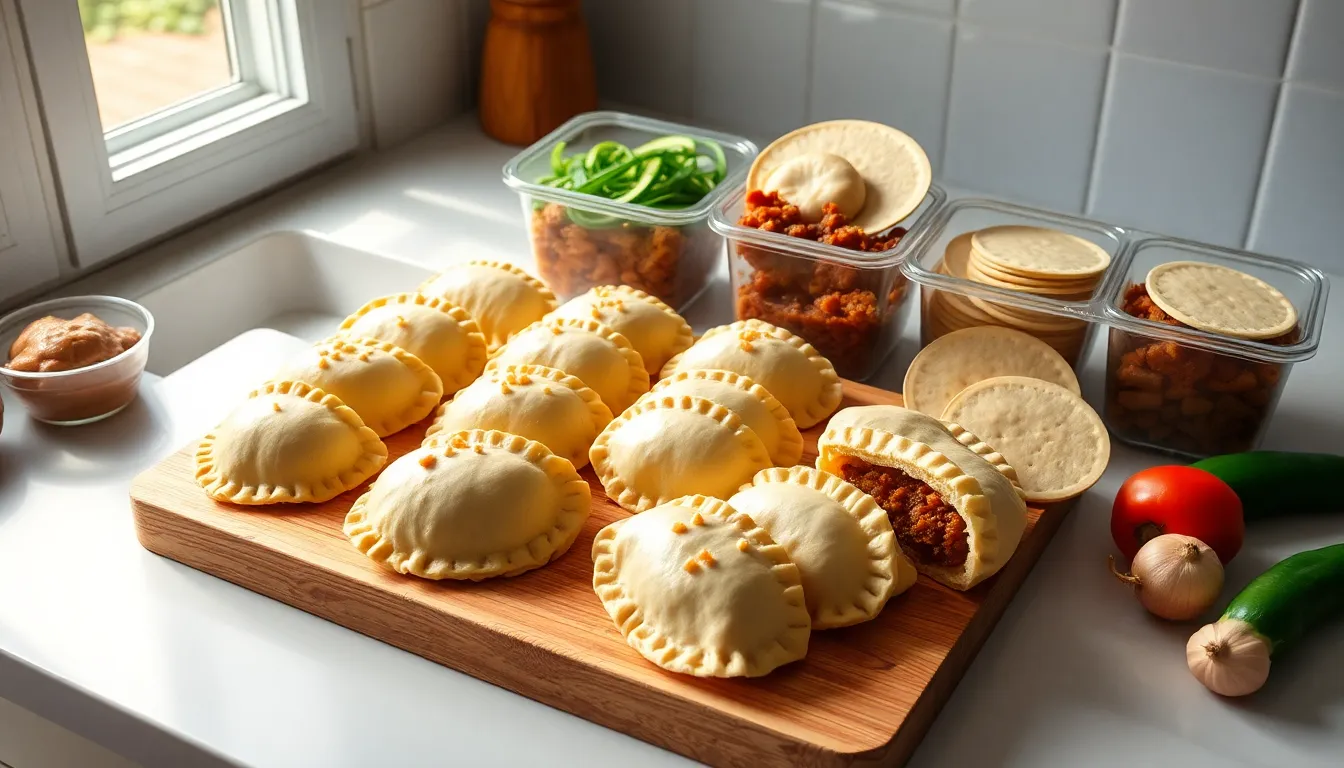
Planning ahead transforms the empanada making process into a stress-free culinary experience. We can prepare various components of our Cuban beef empanadas at different stages to save time and ensure consistent results.
Preparing the Picadillo Filling in Advance
Our picadillo filling benefits from advance preparation as the flavors meld and intensify over time. We recommend making the beef filling up to 2 days before assembly and storing it in the refrigerator in an airtight container. The filling actually tastes better after resting overnight as the spices penetrate the meat and vegetables more thoroughly.
Dough Preparation Timeline
Store-bought frozen empanada disks should be thawed completely before use, which takes approximately 2 to 3 hours at room temperature. We can thaw these disks the night before and keep them refrigerated until ready to use. For homemade dough, we can prepare it up to 24 hours in advance and wrap it tightly in plastic wrap before refrigerating.
Assembly and Storage Options
Assembled empanadas hold exceptionally well when stored properly before cooking. We can assemble our empanadas and keep them covered in the refrigerator for several hours before frying or baking. This approach works perfectly for dinner parties or meal prep situations.
Freezing for Long-Term Storage
Freezing offers the ultimate make-ahead convenience for our Cuban beef empanadas. We can freeze the assembled empanadas on a baking sheet lined with parchment paper until solid, then transfer them to freezer bags for up to 3 months. When ready to cook, we fry or bake them directly from frozen, adding approximately 2 to 3 extra minutes to the cooking time.
| Storage Method | Timeline | Temperature | Special Notes |
|---|---|---|---|
| Picadillo filling (refrigerated) | Up to 2 days | 35-40°F | Flavors improve overnight |
| Assembled empanadas (refrigerated) | Same day | 35-40°F | Cover to prevent drying |
| Frozen empanadas | Up to 3 months | 0°F | Cook directly from frozen |
Reheating Instructions
Previously cooked empanadas reheat beautifully in a 350°F oven for 8 to 10 minutes. We avoid using the microwave as it can make the pastry soggy and compromise the signature crispy texture that makes these empanadas so appealing.
Storage and Reheating Tips
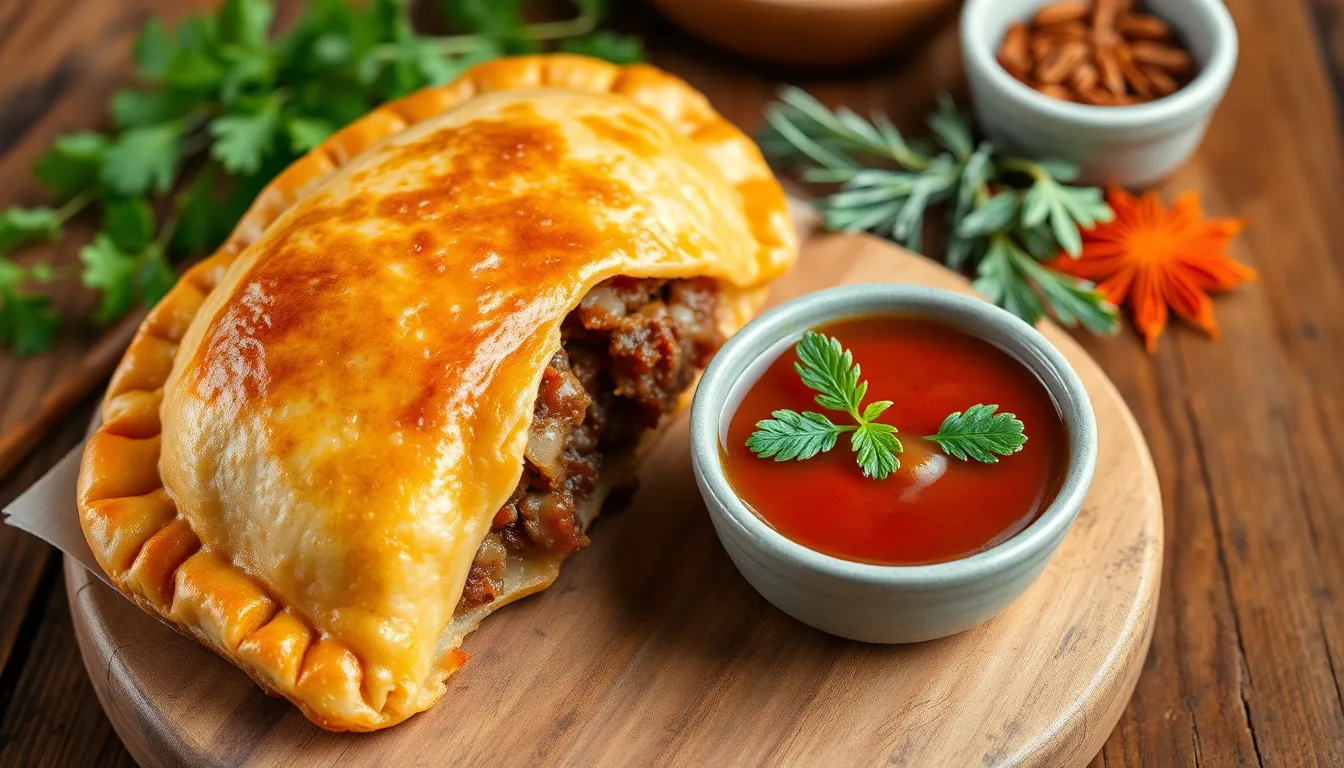
After investing time in crafting these delicious Cuban beef empanadas, we want to help you store and reheat them properly to maintain their authentic flavor and texture.
Storing Empanada Dough
We recommend wrapping the dough tightly in plastic wrap and refrigerating it for up to 2-3 days when you need short-term storage. The dough maintains its workability during this timeframe and rolls out beautifully when brought to room temperature.
For longer storage periods, we suggest freezing the dough in a freezer-safe bag for up to 3 months. When you’re ready to use frozen dough, thaw it overnight in the refrigerator and then allow it to reach room temperature before rolling out. This method preserves the dough’s texture and prevents cracking during the rolling process.
Storing Cooked Empanadas
Cooked empanadas stay fresh in an airtight container in the refrigerator for 3-4 days. We find this storage method works well for meal prep or when you’ve made a large batch for the week.
When freezing cooked empanadas, we place them in a freezer-safe bag or container where they maintain their quality for up to 3 months. Label the container with the date to track freshness and ensure optimal taste when reheating.
Reheating Methods
Proper reheating techniques preserve the empanadas’ crispy exterior and prevent soggy results. We always thaw frozen cooked empanadas completely before reheating to ensure even warming throughout.
Our preferred reheating method involves preheating the oven to 325°F (163°C) and warming the empanadas for about 5 minutes until heated through. This temperature and timing combination maintains the pastry’s crispiness while thoroughly heating the filling.
Baking offers a healthier reheating alternative to frying and produces excellent results. We avoid using microwaves as they create steam that softens the crispy exterior we worked so hard to achieve.
| Storage Method | Duration | Temperature |
|---|---|---|
| Dough (Refrigerated) | 2-3 days | 35-40°F |
| Dough (Frozen) | 3 months | 0°F |
| Cooked (Refrigerated) | 3-4 days | 35-40°F |
| Cooked (Frozen) | 3 months | 0°F |
| Reheating | 5 minutes | 325°F |
These storage and reheating guidelines ensure your Cuban beef empanadas taste freshly made even days after preparation. The key lies in proper wrapping, appropriate temperatures, and gentle reheating methods that preserve both texture and flavor.
Serving Suggestions
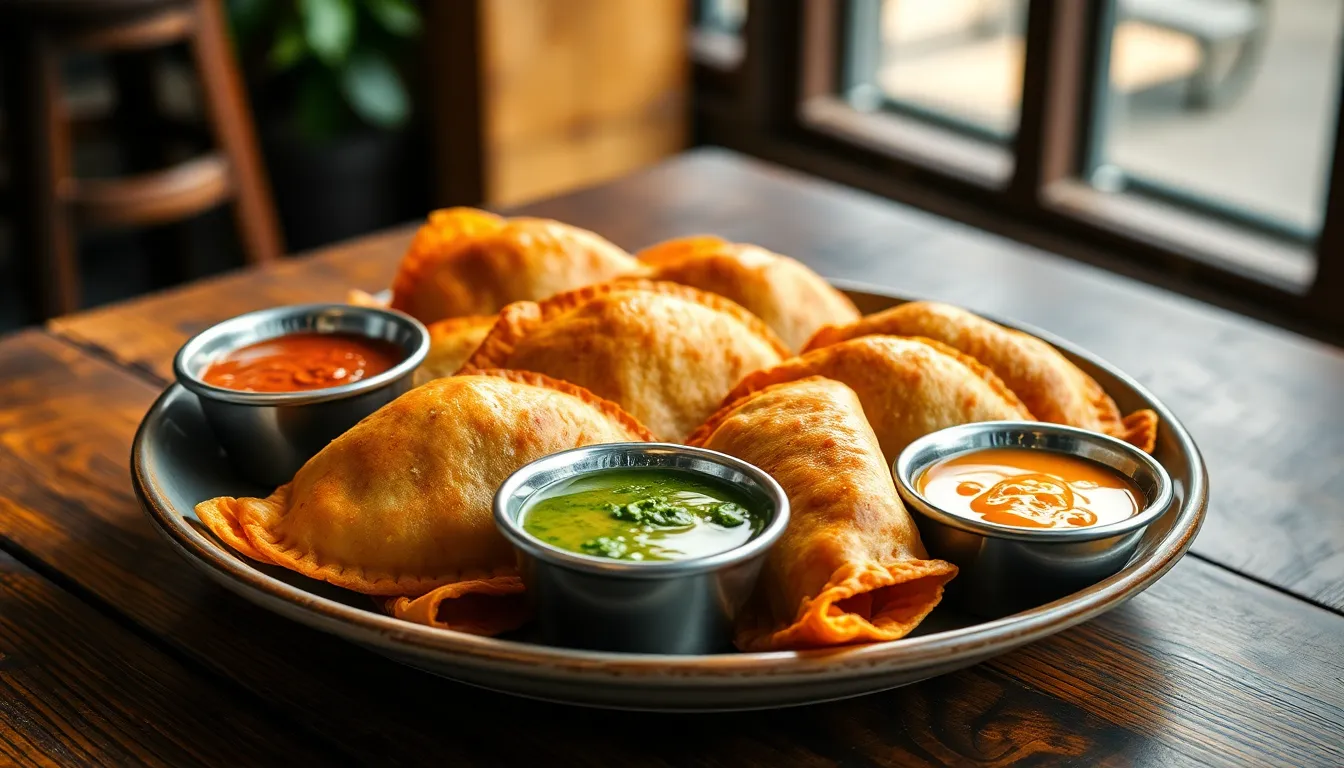
Cuban beef empanadas shine brightest when served hot and paired with complementary flavors that enhance their rich picadillo filling. We recommend presenting these golden parcels immediately after cooking while the exterior remains crispy and the beef filling stays warm and aromatic.
Traditional Cuban Accompaniments
Chimichurri sauce makes an exceptional dipping companion for our empanadas. The fresh herbs and tangy vinegar cut through the rich beef filling beautifully. Spicy aioli offers another fantastic option, particularly sriracha aioli which adds heat without overwhelming the delicate spice balance in the picadillo.
Perfect Occasions for Cuban Empanadas
These versatile hand pies excel as appetizers during tapas-style gatherings. We find they create memorable moments at parties and BBQs where guests appreciate their unique flavors and convenient handheld format. Light lunches become more satisfying when featuring 2-3 empanadas alongside a simple salad.
Beverage Pairings
Cold beverages complement the warm empanadas perfectly. Spanish wines provide an authentic pairing that honors the dish’s cultural roots. Sangria offers a festive touch that makes any meal feel like a celebration. We suggest serving these drinks chilled to contrast with the hot empanadas.
Presentation Tips
| Serving Style | Portion Size | Best For |
|---|---|---|
| Appetizer | 1-2 empanadas per person | Parties, gatherings |
| Light lunch | 2-3 empanadas per person | Casual meals |
| Snack | 1 empanada per person | Between meals |
Arrange empanadas on warm plates to maintain their temperature longer. Small bowls of dipping sauce placed strategically around the serving area encourage guests to try different flavor combinations. The golden brown color and distinctive crimped edges make these empanadas visually appealing centerpieces for any Cuban-inspired meal.
Recipe Variations
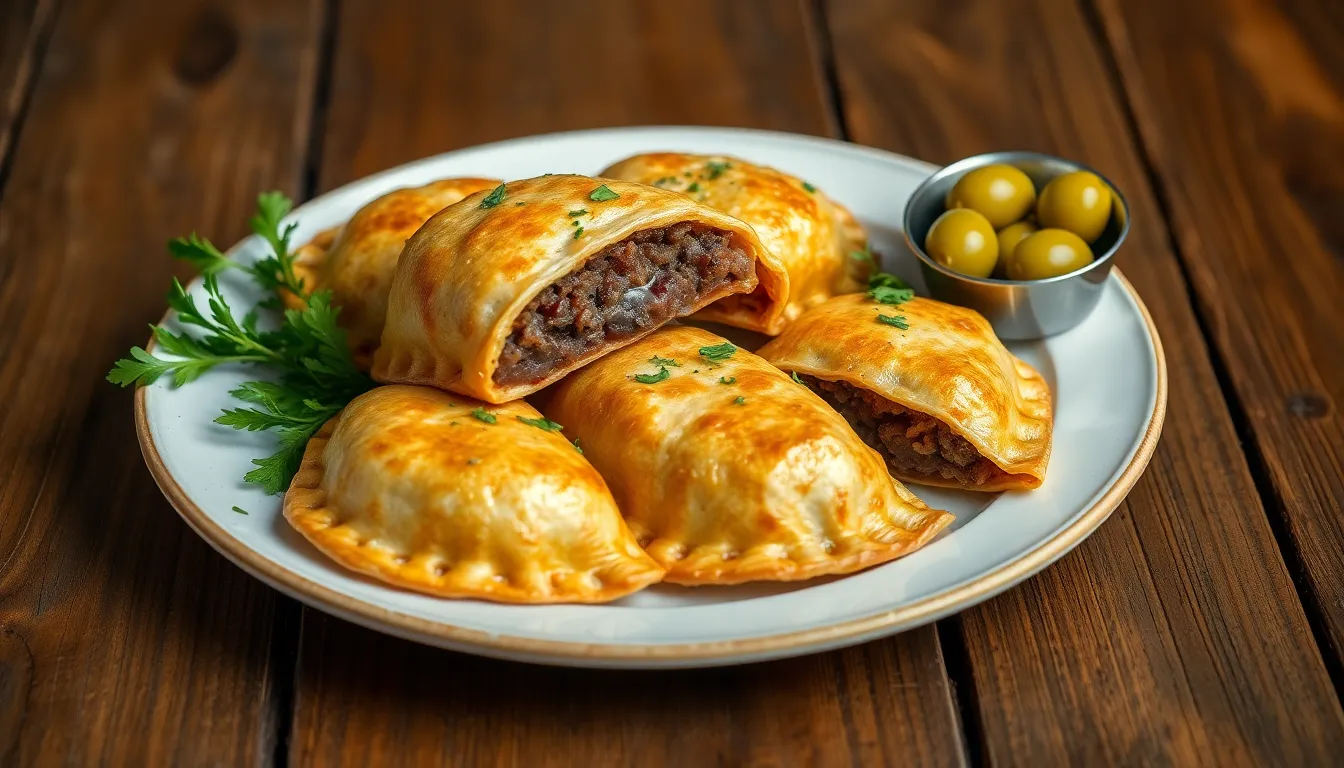
We love experimenting with different approaches to Cuban beef empanadas because each variation brings its own unique character to this beloved dish. Our testing has revealed several exciting ways to customize both the filling and preparation methods to suit different tastes and cooking preferences.
Cheese-Enhanced Filling
Adding cheese to our traditional picadillo creates an incredibly rich and satisfying variation. We recommend incorporating 1 cup of shredded Monterey Jack or mild cheddar cheese into the cooled beef mixture. The cheese melts beautifully during cooking and provides a creamy contrast to the savory beef and tangy olives.
Homemade Dough Options
While store-bought empanada disks offer convenience, we often prepare our own dough for special occasions. Our Cuban-style dough combines 2 cups all-purpose flour with ¼ cup lard, 2 tablespoons sugar, and a hint of cinnamon for authentic flavor. This homemade version produces a more tender texture and allows us to control the thickness of each empanada wrapper.
Cooking Method Variations
Baking Approach: We brush our assembled empanadas with beaten egg wash and bake them at 375°F for 15 to 20 minutes until golden brown. This method produces lighter empanadas with less oil content while maintaining excellent flavor.
Frying Technique: Deep-frying in 350°F oil for 3 to 4 minutes per side creates the traditional crispy exterior that many prefer. We find this method delivers the most authentic texture and golden color.
Spice and Ingredient Adjustments
Our recipe variations often involve adjusting the traditional flavor profile while maintaining Cuban authenticity. Some cooks prefer reducing the raisins or omitting them entirely for a purely savory experience. Others increase the green olives and capers for a more briny flavor profile.
| Variation Type | Key Changes | Cooking Time | Yield |
|---|---|---|---|
| Classic Recipe | Standard picadillo filling | 40-45 minutes | 10 empanadas |
| Cheese Addition | +1 cup shredded cheese | 40-45 minutes | 10 empanadas |
| Homemade Dough | Custom flour mixture | 45-50 minutes | 10 empanadas |
| Baked Version | Egg wash brushing | 35-40 minutes | 10 empanadas |
We encourage trying different combinations to discover your preferred version. Each variation maintains the essential Cuban flavors while offering unique textures and taste experiences that make these empanadas perfect for any occasion.
Conclusion
These Cuban beef empanadas bring the vibrant flavors of Latin America right to your kitchen. With their perfectly seasoned picadillo filling and flaky golden crust they’re guaranteed to become a family favorite.
Whether you choose to bake or fry them the result is always delicious. The make-ahead options and freezer-friendly nature make these empanadas perfect for busy weeknights or entertaining guests.
We’ve given you all the tools and techniques needed to master this traditional recipe. Now it’s time to roll up your sleeves and start creating these irresistible Cuban treats that’ll have everyone asking for seconds.
Frequently Asked Questions
What are Cuban beef empanadas?
Cuban beef empanadas are traditional Latin American pastries filled with seasoned ground beef, sofrito, olives, and raisins. They feature authentic Cuban flavors enhanced by spices like cumin, oregano, and sazón, all wrapped in a flaky pastry dough. These handheld treats make perfect party appetizers or satisfying snacks.
Can I make the empanada filling ahead of time?
Yes, you can prepare the Cuban beef filling (picadillo) up to 2 days in advance. Store it covered in the refrigerator and reheat gently before assembling the empanadas. This make-ahead option saves time and allows the flavors to develop even more.
What’s the difference between baking and frying empanadas?
Baking at 375°F for 20-30 minutes creates less oily empanadas with a crispy crust, while frying in hot oil for 3-5 minutes per side produces a richer, crunchier exterior. Both methods deliver delicious results, with frying offering a more traditional texture.
How long can I store assembled empanadas?
Assembled empanadas can be refrigerated for several hours before cooking or frozen for up to 3 months. If freezing, place them on a baking sheet first, then transfer to freezer bags. Cook frozen empanadas directly without thawing, adding extra cooking time.
What ingredients make Cuban empanadas authentic?
Key authentic ingredients include sofrito (a aromatic cooking base), sazón seasoning, green olives, raisins, cumin, and oregano. These elements create the distinctive sweet-savory flavor profile that sets Cuban empanadas apart from other Latin American variations.
How should I reheat leftover empanadas?
The best method is reheating in a preheated oven at 325°F for about 5 minutes. This maintains the crispy exterior better than microwaving. Cooked empanadas can be stored in the refrigerator for 3-4 days or frozen for up to 3 months.
What are good serving suggestions for Cuban beef empanadas?
Serve hot empanadas with chimichurri sauce or spicy aioli for dipping. They pair wonderfully with Spanish wines or sangria. Present them on a platter garnished with fresh herbs, and consider offering multiple dipping sauces to enhance the dining experience.
Can I use store-bought empanada dough?
Yes, frozen empanada discs are a convenient alternative to homemade dough. While homemade dough offers superior flavor and texture, store-bought versions work well when you’re short on time. Thaw frozen discs according to package instructions before filling.

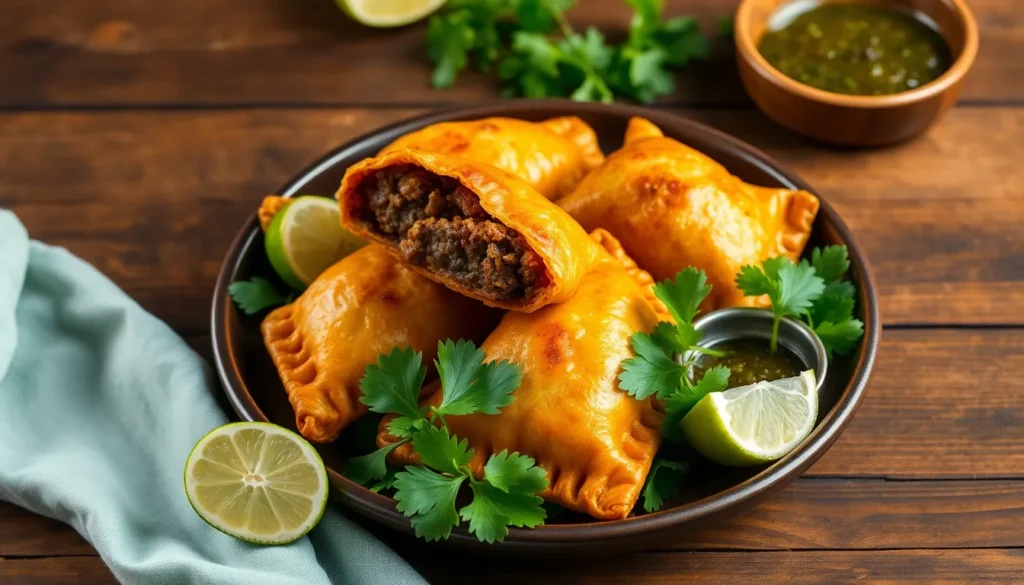




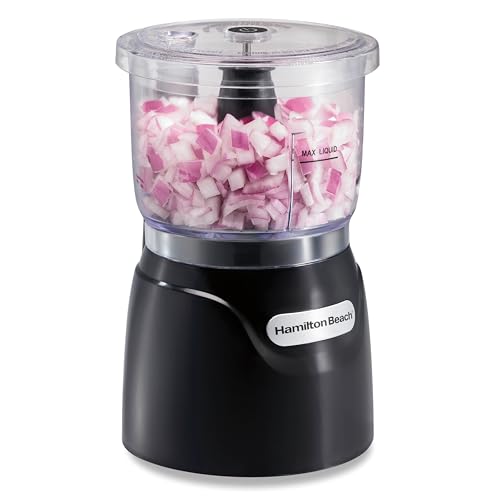













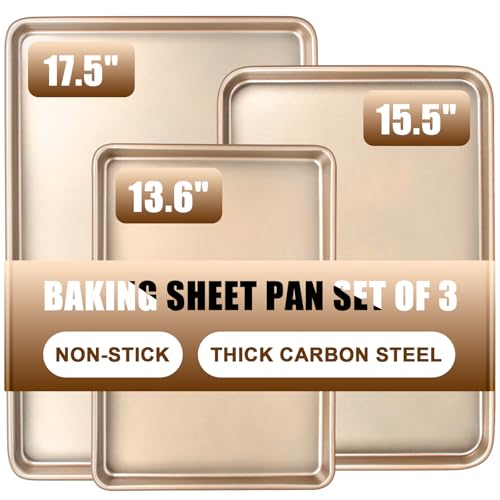








![Freshware Meal Prep Containers [50 Pack] 1 Compartment with Lids,](https://m.media-amazon.com/images/I/5100woitKcL._SL500_.jpg)




![100% Compostable Paper Plates, Heavy Duty Disposable Plates [125-Pack] 9](https://m.media-amazon.com/images/I/41i7r-FompL._SL500_.jpg)









